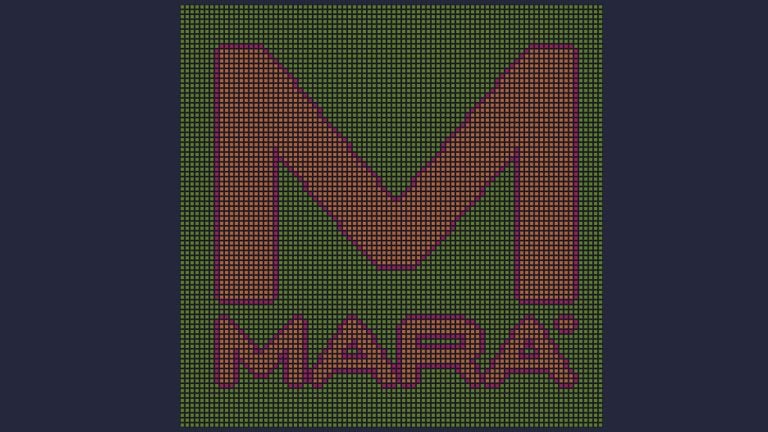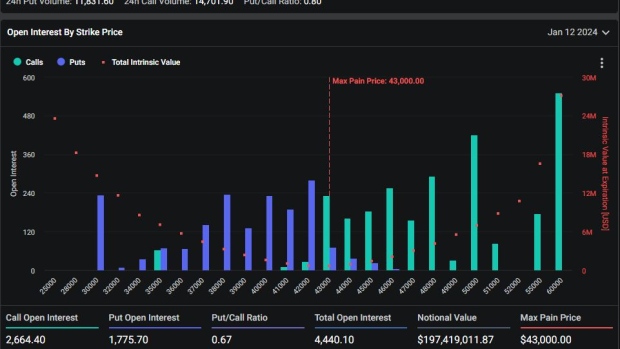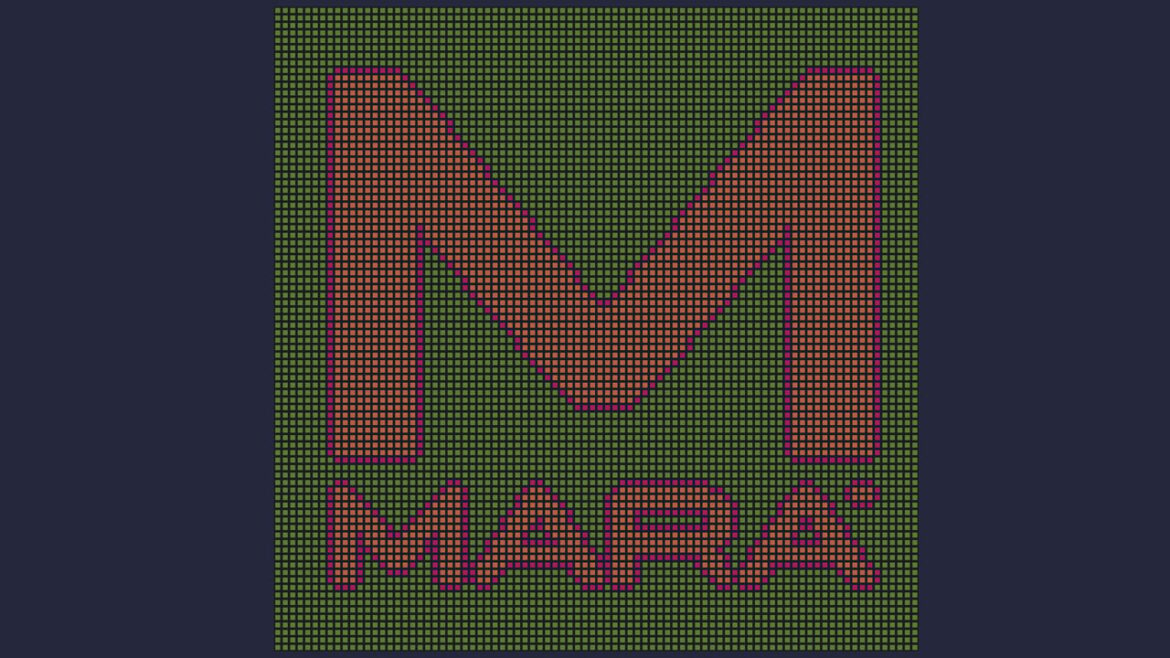 PRESS RELEASE. [Singapore, April 12th 2024] Yala, a liquidity and stablecoin protocol, is excited to unveil its new vision for the future “to create a thriving, open ecosystem that unlocks the full potential of DeFi on Bitcoin”. This ambition reflects Yala’s dedication to catalyzing mass adoption of decentralized finance on the world’s most resilient blockchain, […]
PRESS RELEASE. [Singapore, April 12th 2024] Yala, a liquidity and stablecoin protocol, is excited to unveil its new vision for the future “to create a thriving, open ecosystem that unlocks the full potential of DeFi on Bitcoin”. This ambition reflects Yala’s dedication to catalyzing mass adoption of decentralized finance on the world’s most resilient blockchain, […]
Source link
unveils
In a detailed analysis shared on X, Miles Deutscher, a renowned crypto analyst, cast a spotlight on the burgeoning sector of Real World Assets (RWA) within the crypto market. Deutscher’s discourse comes in the wake of BlackRock’s groundbreaking venture into tokenized funds, signaling a seismic shift in the digital asset landscape.
With projections indicating that tokenized assets are poised to reach a valuation of $10 trillion by 2030, Deutscher’s enthusiasm is palpable. “If you’re still sleeping on this sector, now is the time to wake up,” he declares, laying the groundwork for a deep dive into RWAs and their associated investment opportunities.
The Genesis And Essence Of Real World Assets (RWA)
Real World Assets (RWA) serve to bridge the tangible with the digital, tokenizing physical commodities such as gold, real estate, and various other commodities, thereby enhancing their efficiency and accessibility. This digitization process eliminates the need for traditional brokers, reduces entry barriers, and significantly cuts down on associated costs.
“RWAs represent a revolutionary step forward in democratizing access to investment in major assets,” Deutscher asserts. He further explains that RWAs not only unlock vast markets for participation—such as global bonds and gold—but also integrate real-world, income-generating assets into the DeFi yield ecosystem.
At their core, RWAs embody ownership rights over physical assets through the digital tokenization on blockchain platforms. Through smart contracts, issuers can mint these tokens, defining their value and the mechanics of their trade. This innovative approach has seen the market capitalization of tokenized public securities surpass $700 million, with the tokenized gold market nearing a $1 billion valuation, according to a report by Bank of America.
This growing demand underscores the sector’s potential, significantly buoyed by BlackRock’s recent foray into RWA with its digital asset fund focused on bonds. Within a mere fortnight, this fund ballooned to a $274 million market cap, capturing a 37.53% market share.
BlackRock’s pivot towards RWAs is not an isolated trend but a bellwether for the industry’s trajectory. “Larry Fink’s bullish stance on tokenization heralds a new era for securities,” Deutscher notes, highlighting the BlackRock CEO’s long-maintained belief in the transformative power of tokenization.
This movement is gaining momentum, with heavyweight TradFi players such as Citi, Franklin Templeton, and JPMorgan exploring RWA avenues. “The convergence of traditional finance and blockchain through RWAs is a testament to the sector’s viability and growth potential,” Deutscher adds, underlining the legitimization of RWAs by these financial titans.
Deutscher’s Curated List Of Top RWA Altcoins
Delving deeper into the specifics, Deutscher categorizes his top picks within the RWA ecosystem:
Layer 1 and Layer 2 Blockchains: Highlighting the significance of foundational blockchain platforms, Deutscher points to L1 and L2 chains that are pivotal in hosting RWA protocols. He emphasizes the strategic advantage of these chains in attracting liquidity and users, albeit noting the nuanced investment approach needed to maximize RWA-specific gains.
“Hyped narratives often drive a lot of liquidity and users to the main chain that powers the underlying dApp. […] The issue with this style of investing, despite its ability to hedge against downside, is the lack of direct upside. If you want capture more RWA-specific upside, RWA-focused chains like Redbelly Network & MANTRA offer more direct exposure,” Deutscher argues.
Oracles as the Backbone of RWA Tokenization: Oracles play a crucial role in ensuring the accurate reflection of real-world asset values on the blockchain. Deutscher is particularly bullish on Chainlink (LINK), citing its foundational role in secure, cross-chain information bridging. “Chainlink is indispensable for the RWA sector, offering real-time data verification that’s critical for the integrity of tokenized assets,” he explains.
Moreover, the crypto analyst points to Pyth Network (PYTH) if investor want to “move further down the risk curve.” He added, “whilst Chainlink serves more broader sectors, Pyth is interesting as a DeFi-centric bet, due to its wide L1 compatibility.”
RWA-Specific Protocols: Projects like Ondo Finance, Pendle Finance, and Frax Finance are lauded by Deutscher for their direct engagement with RWAs, each offering unique solutions to leverage real-world assets within the DeFi space. Deutscher applauds Ondo Finance for addressing liquidity challenges, Pendle Finance for its innovative yield-tokenization approach, and Frax Finance for its multifaceted DeFi offerings that include traditional investment avenues.
Emerging Stars in the RWA Space: Deutscher also sheds light on upcoming projects like Lingo and Truflation, earmarking them as ones to watch. With Lingo’s unique model of funding RWA pools for brand partner rewards and Truflation’s infrastructure play in decentralizing economic data, these platforms are at the forefront of RWA innovation, according to him.
At press time, ONDO had a market capitalization of $1.12 billion and was the 94th largest cryptocurrency by market cap. The price stood at $0.80.

Featured image created DALL·E, chart from TradingView.com
Disclaimer: The article is provided for educational purposes only. It does not represent the opinions of NewsBTC on whether to buy, sell or hold any investments and naturally investing carries risks. You are advised to conduct your own research before making any investment decisions. Use information provided on this website entirely at your own risk.
Double or Nothing: Proshares Unveils BITU and SBIT ETFs for Bullish and Bearish Bitcoin Bets
 On Tuesday, Proshares introduced two new offerings: the Ultra Bitcoin exchange-traded fund, sporting the ticker BITU, and the Ultrashort Bitcoin exchange-traded fund (ETF), known as SBIT. While BITU is designed to deliver two times the daily returns of bitcoin, SBIT is structured to produce double the inverse of bitcoin’s daily returns. Proshares Introduces Leveraged and […]
On Tuesday, Proshares introduced two new offerings: the Ultra Bitcoin exchange-traded fund, sporting the ticker BITU, and the Ultrashort Bitcoin exchange-traded fund (ETF), known as SBIT. While BITU is designed to deliver two times the daily returns of bitcoin, SBIT is structured to produce double the inverse of bitcoin’s daily returns. Proshares Introduces Leveraged and […]
Source link
Marathon Digital Holdings Unveils ‘M’ Block Art on Bitcoin Blockchain
 Bitcoin miner Marathon Digital Holdings has crafted a block that prominently displays the letter “M” by carefully arranging transactions and fee rates within its mining pool. This novel approach introduces a creative twist to block creation in the blockchain realm. Despite this innovative step, Marathon has made it clear that it currently does not offer […]
Bitcoin miner Marathon Digital Holdings has crafted a block that prominently displays the letter “M” by carefully arranging transactions and fee rates within its mining pool. This novel approach introduces a creative twist to block creation in the blockchain realm. Despite this innovative step, Marathon has made it clear that it currently does not offer […]
Source link
FXS Price Poised For Uptrend As Frax Finance Unveils Roadmap To Reach $100B TVL
Frax Finance, a decentralized finance (DeFi) protocol, recently unveiled its Singularity Roadmap. It aims to propel the total value locked (TVL) of its layer 2 blockchain, Fraxtal, to $100 billion by the end of 2026. This notable surge would represent a 760,000% increase from the current TVL levels, which stand at $13 million.
Frax Finance Singularity Roadmap
According to the protocol’s announcement, Fraxtal, the substrate that powers the Frax ecosystem, serves as Frax Finance’s operating system. With the launch of Fraxtal and achieving an effective 100% Collateralization Ratio (CR), Frax Finance claims to have consolidated its core product offerings.
To reach the ambitious $100 billion TVL goal, the protocol has announced that it has already generated over $45 million, reaching the coveted 100% CR.
As announced, with this milestone achieved, the FRAX stablecoin, which has remained relatively dormant during the process, and the FXS revenue share, which has been temporarily reduced by 90% to conserve assets, can now undergo a “transformative change.”
In addition, the upcoming introduction of Layer 3s (L3s) on Fraxtal is expected to be a key factor in further contributing to the growth and adoption of the protocol.
Fraxtal, which is built on the Optimism (OP) network, stands out as one of the most widely used layer 2 solutions on top of Ethereum (ETH), according to the protocol. The Frax team says it has developed its underlying incentives to provide a seamless experience for developers and users, further encouraging adoption.
In particular, by owning the entire stack, Frax can introduce advanced features such as account abstraction, new precompiles, privacy features, aggregated decentralized applications (dApps), and interoperability with Superchain.
The protocol believes these features will enhance the on-chain experience, making Fraxtal the “preferred” platform for holding, staking, and transferring crypto assets.
Expansion Strategy
The proposal also unveils Frax Finance’s plan to establish 23 Layer 3s within 365 days, kicking off the “Fraxtal Nation” community. By supporting these 23 chains with developer access, incentives, and investment, Frax aims to foster a positive-sum approach and provide additional support to official partners.
The protocol also suggests that these partners will receive “substantial allocations” of FXTL points, aiming to solidify the role of the FXS token as the ultimate beneficiary of the Frax ecosystem.
Moreover, Frax Finance founder Sam Kazemian intends to allocate 50% of the revenue from protocol fees to veFXS token holders. In comparison, the remaining 50% will be used to acquire FXS and other Frax assets for pairing in the FXS Liquidity Engine (FLE).
This initiative will increase liquidity, strengthen the Frax balance sheet, and provide additional incentives for the protocol’s stakeholders.
Frax Finance’s proposal also seeks to reactivate the protocol fee switch, which was temporarily turned off during the consolidation phase of the protocol.
By reigniting this switch, a portion of the yield generated from protocol fees will be directed toward veFXS token holders. veFXS, or veiled FXS, represents a locked version of the native token, FXS, and offers enhanced voting power and participation in the Frax ecosystem.
As of the time of writing, FXS has not responded favorably to the news. Its current trading price is $6.93, reflecting a 3.5% loss in the past 24 hours. It is important to note that the proposed protocol features are still in development, and the impact on the Frax Finance ecosystem and the token’s performance is yet to be determined.
Featured image from Shutterstock, chart from TradingView.com
Disclaimer: The article is provided for educational purposes only. It does not represent the opinions of NewsBTC on whether to buy, sell or hold any investments and naturally investing carries risks. You are advised to conduct your own research before making any investment decisions. Use information provided on this website entirely at your own risk.
Congress unveils first six budget bills to avert government shutdown
Senate Majority Leader Charles Schumer, D-N.Y., left, and Speaker of the House Mike Johnson, R-La., attend a Menorah lighting to celebrate the eight-day festival of Hanukkah, in the U.S. Capitol on Tuesday, December 12, 2023.
Tom Williams | Cq-roll Call, Inc. | Getty Images
Congressional lawmakers on Sunday released the details of the first six budget bills needed to keep government agencies funded before they run out of money and a partial government shutdown takes effect this coming weekend.
The 1,050-page appropriations package has funding for six major areas of government that encompass military and veterans affairs departments, agriculture, commerce, energy and water, transportation, housing, and more.
Funding for those departments was due to expire last Friday, March 1, but congressional leaders struck a deal on Wednesday to extend those deadlines by a week and avert a partial government shutdown. It was the fourth such funding extension this fiscal year, as Congress has struggled to settle on a long-term budget plan.
This partial budget deal is a step forward in the push to secure a permanent budget plan for the rest of the fiscal year, which started Oct. 1.
But these six funding bills are just half the battle.
The other six appropriations bills that keep the rest of the government funded are due to expire March 22, giving Capitol Hill just over two weeks to negotiate the other half of the government’s spending plan.
Read more CNBC politics coverage
Still, leaders on both sides of the aisle are touting the first half of funding package as a win, though for different reasons.
Democrats are trumpeting the continued full funding of a special food assistance program for women, infants and children. They also secured wins on rent assistance and pay for infrastructure employees like air traffic controllers and railway inspectors.
“Throughout the negotiations, Democrats fought hard to protect against cuts to housing and nutrition programs, and keep out harmful provisions that would further restrict access to women’s health, or roll back the progress we’ve made to fight climate change,” Senate Majority Leader Chuck Schumer, D-N.Y., said in a Sunday statement.
Meanwhile, Republicans are trumpeting victories on veterans’ gun ownership and funding cuts to government agencies like the Environmental Protection Agency, the FBI and the Bureau of Alcohol, Tobacco, Firearms and Explosives.
“House Republicans secured key conservative policy victories, rejected left-wing proposals, and imposed sharp cuts to agencies and programs critical to President Biden’s agenda,” House Speaker Mike Johnson, R-La., said in a statement Sunday.
The funding package now heads to the House for a vote where it will likely face opposition from the House Freedom Caucus, a coalition of Republican hard-liners who have relentlessly opposed budget compromises over the past fiscal year.
“The clock is now ticking until government funding runs out this Friday. Between now and the end of the week, the House must quickly pass and send the Senate this bipartisan package,” Schumer said Sunday. “Once again, it will only be bipartisanship that gets us across the finish line.”
Don’t miss these stories from CNBC PRO:
 Tron is embarking on an ambitious journey to transform the Bitcoin ecosystem, as announced by its founder, Justin Sun. Through the integration of Bitcoin Layer two solutions, Tron seeks to decentralize and interconnect a variety of token types, including major stablecoins, with the Bitcoin network. Justin Sun’s Outlines Vision to Merge Tron and Bitcoin Networks […]
Tron is embarking on an ambitious journey to transform the Bitcoin ecosystem, as announced by its founder, Justin Sun. Through the integration of Bitcoin Layer two solutions, Tron seeks to decentralize and interconnect a variety of token types, including major stablecoins, with the Bitcoin network. Justin Sun’s Outlines Vision to Merge Tron and Bitcoin Networks […]
Source link
The Chrysler Halcyon concept car.
Stellantis
DETROIT — Chrysler revealed the direction of its future products on Tuesday with a new concept car called “Halcyon,” as the once prominent auto company attempts to drum up attention amid a dearth of new products.
The concept car is a sleek, future-looking sports car that’s designed to incorporate emerging technologies such as autonomous driving and new battery materials and charging capabilities for electric vehicles. It features an updated Chrysler logo as well as other design characteristics that officials say will carry over into production vehicles.
However, consumers will likely have to wait a bit to purchase a new Chrysler with such technologies or anything that potentially resembles the concept car.
Following the discontinuation last year of the Chrysler 300 sedan, the brand’s sole product is the Chrysler Pacifica minivan, including a plug-in hybrid electric model. Aside from an update to the minivan, Chrysler — owned by Stellantis, the company formed via a merger between Fiat Chrysler and French automaker PSA Group — isn’t expected to have a new vehicle until next year.
The Chrysler Halcyon concept car.
Stellantis
That new vehicle – a crossover, not a car – is anticipated to be Chrysler’s first all-electric vehicle, as the brand transitions to exclusively offer “a full lineup of innovative, seamlessly connected” EVs by 2028.
Chrysler CEO Christine Feuell, who started leading the brand in September 2021, said the company expects to roll out such a lineup of vehicles “in quick succession” after the EV crossover next year.
She said Chrysler’s parent companies did not invest in the brand “for a very long time.”
“I would always love to have more and faster, but I can tell you that over the last few years, we’ve not only grown sales, we’ve improved the profitability of the brand significantly,” Feuell said.
She said despite slower-than-expected adoption of the EV sales in the U.S., the company remains on track for its transition.
Feuell said the brand, which sold roughly 144,000 vehicles last year in the U.S. and Canada, “made a very good profit” in 2023. Those earnings will assist in funding the future vehicles inspired by the Halcyon concept, she said.
The Chrysler Halcyon concept car.
Stellantis
Automakers routinely use concept vehicles to gauge customer interest or show the future direction of a vehicle or brand. The vehicles are not meant to be sold to consumers.
The Halcyon concept car boasts “harmony in motion” and sustainability principles, according to several officials. The vehicle is built on one of Stellantis’ next-generation EV platforms. It includes synthetic materials rather than leather; 45% glass surface exterior; and utilizes 95% sustainable interior materials, including crushed compact discs, or CDs, as the Chrysler logo at the entryway of the vehicle.
The car is the latest concept from Chrysler following a minivan-like “Portal” vehicle in 2017, Airflow crossover in 2022 and “Synthesis Cockpit” demonstrator in 2023.
The Halcyon was scheduled to be revealed at the CES tech trade show in January, however Stellantis canceled those plans as well as other events to save capital.
The Chrysler Halcyon concept car.
Stellantis
Don’t miss these stories from CNBC PRO:
The Solana Foundation, a non-profit organization dedicated to decentralization, adoption, and security on the Solana network, has launched token extensions.
Solana Token Extensions Gains Traction
According to a January 24 announcement, token extensions provide developers, enterprises, financial institutions, and Solana-native development teams with a comprehensive suite of turnkey solutions for advanced token functionality. Anatoly Yakovenko, co-founder of Solana and CEO of Solana Labs, commented on the launch, stating:
Token extensions build on the characteristics that make Solana the ideal destination for developers. Solana is the first network to offer this level of integrated developer and user experience in a single token program. We’re already seeing the potential to build using token extensions via deployments from some of the most recognizable names in crypto.
Industry giants Paxos and GMO-Z.com Trust Company Inc. (GMO Trust) are leading the way in adopting token extensions. As announced by the Solana Foundation, these companies are “leveraging the benefits” of token extensions to issue stablecoins on the Solana blockchain.
As previously reported, Paxos, a regulated blockchain and tokenization infrastructure platform, expanded its stablecoin issuance to the network in December. Similarly, GMO Trust announced the launch of the first regulated Japanese yen stablecoin and their own US dollar stablecoin on the Solana network.
New Standards For Blockchain Compliance?
Sheraz Shere, Head of Payments at the Solana Foundation, emphasized the appeal of the Solana network for enterprise-grade companies entering the web3 space. Shere stated:
Companies like Visa, Worldpay, Stripe, Google, and Shopify have already seen the performance advantages inherent to the Solana network and have launched solutions and applications that are only possible on Solana. With token extensions, we are expanding what is possible for enterprise adoption of blockchain by natively enabling features that matter to large regulated enterprises.
Token extensions, designed to cater to builders across diverse industries such as stablecoins, real-world assets (RWA), and payments, offer a range of interesting features:
- Transfer Hooks: Enables token issuers to exert control over token interactions, empowering developers to create intricate and flexible token mechanisms.
- Transfer Fees: Provides the ability to charge fees for each token transfer, offering sustainable revenue models for different types of tokens built using token extensions.
- Confidential Transfers: Utilizes zero-knowledge proofs to encrypt the transfer amount while publicly sharing the source, destination, and token type. This ensures compliance while preserving privacy.
- Permanent Delegate Authority: Grants token issuers absolute authority over their tokens, particularly for those requiring revocation ability, such as licenses or credentials.
- Non-transferability: Restricts token transfers to the issuer only, making it ideal for unique user identification and credentialing purposes.
Ultimately, with the launch of token extensions, Solana aims to position itself as a force in blockchain development, offering builders the tools to create new applications across various industries.
The SOL token experienced a sharp drop of over 28% in the past 30 days, leading to a decline to the $79 level. However, the token has recovered in the past 24 hours with a 5% bounce, leading to a current trading price of $87.
Featured image from Shutterstock, chart from TradingView.com
Disclaimer: The article is provided for educational purposes only. It does not represent the opinions of NewsBTC on whether to buy, sell or hold any investments and naturally investing carries risks. You are advised to conduct your own research before making any investment decisions. Use information provided on this website entirely at your own risk.
As the long-awaited deadline for a positive or negative decision on spot Bitcoin ETF applications approaches, Bloomberg reports that the BTC options market is seeing increased hedging activity as traders prepare for a crucial decision on January 10th.
The report indicates a surge in open interest for put options expiring on Jan. 12, suggesting that market participants are taking steps to mitigate potential losses in the event of a negative verdict by the US Securities and Exchange Commission (SEC) regarding these index funds holding the cryptocurrency.
Market Readies For Bitcoin ETF Verdict
The Bloomberg report highlights that the open interest for put options, which allow holders to sell Bitcoin, has seen a significant increase for contracts expiring on January 12.
This surge in open interest has resulted in a higher put-to-call ratio for these specific options compared to contracts with expiration dates further out from the January 10 deadline.
As seen in the chart below, the most prominent strike prices for the put contracts are $44,000, $42,000, and $40,000, respectively, indicating that put holders could exercise their options to minimize losses in case of a negative market reaction to the SEC decision.

The put-to-call ratio, considered a measure of overall market sentiment, stands at 0.67 for the January 12 options contracts, indicating a more cautious approach among traders.
Ryan Kim, head of derivatives at FalconX, suggests that leveraged/speculative traders are employing Bitcoin put options to protect their leveraged longs, anticipating significant price movements in either direction.
The higher put-call ratio for January 12 options further reflects the market’s desire for protection against a potential negative decision.
The surge in open interest for put options expiring on January 12 indicates a growing need for protection in case of an unfavorable ruling. While Bitcoin’s rally has softened the impact of its 2022 decline, market expectations for ETF approval may already be priced in, posing potential risks for the market.
BTC’s Price Resistance And Potential Dip
Bitcoin has experienced a remarkable rally this year, with expectations for ETF approval driving its price up by more than 60% since mid-October.
However, the Bloomberg report suggests that the surge in demand for the anticipated ETFs may already be factored into the token’s price, potentially exposing the market to a “sell the news” scenario in the second week of January.
Furthermore, QCP Capital, a Singapore-based crypto asset trading firm, predicts topside resistance for Bitcoin in the range of $45,000 to $48,500 and a possible retracement to $36,000 levels before the uptrend resumes.
Bitcoin is currently trading at $43,400, experiencing a 1% decline over the past 24 hours. Over the past 14 days, the cryptocurrency has shown a sideways price movement with a slight decrease of 0.4%.
Given Bitcoin’s well-known volatility, it remains uncertain how the market will react as the looming decision and potential catalysts draw near, and how these factors will impact its price dynamics.
However, the upcoming decision is not the sole catalyst that can potentially drive Bitcoin’s price in 2024. The cryptocurrency is also anticipated to experience a significant catalyst in April 2024, known as the halving event.
This event has historically resulted in an upward surge in Bitcoin’s price, and it is predicted to propel the cryptocurrency beyond its previous all-time high (ATH) of $69,000 throughout the upcoming year.
Featured image from Shutterstock, chart from TradingView.com
Disclaimer: The article is provided for educational purposes only. It does not represent the opinions of NewsBTC on whether to buy, sell or hold any investments and naturally investing carries risks. You are advised to conduct your own research before making any investment decisions. Use information provided on this website entirely at your own risk.










